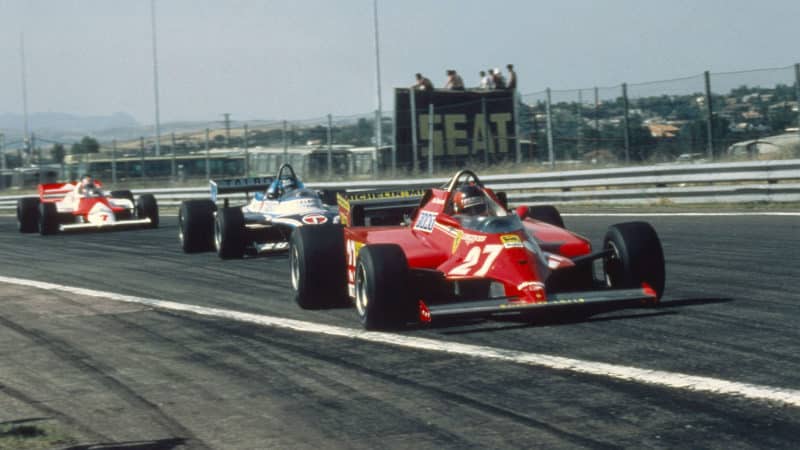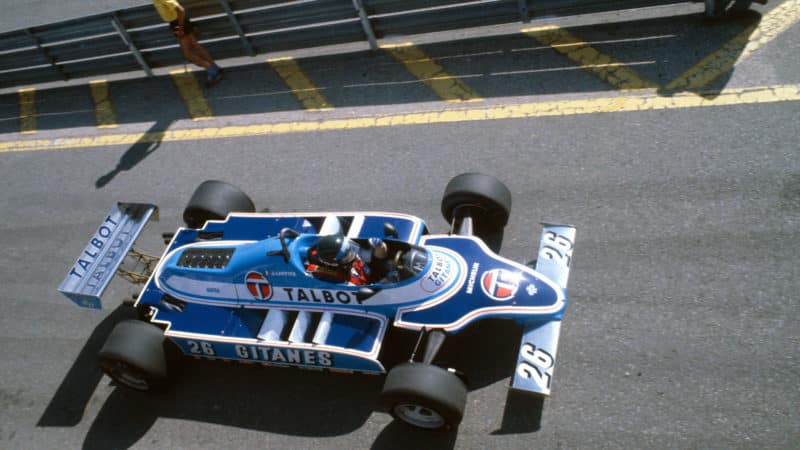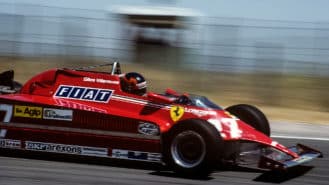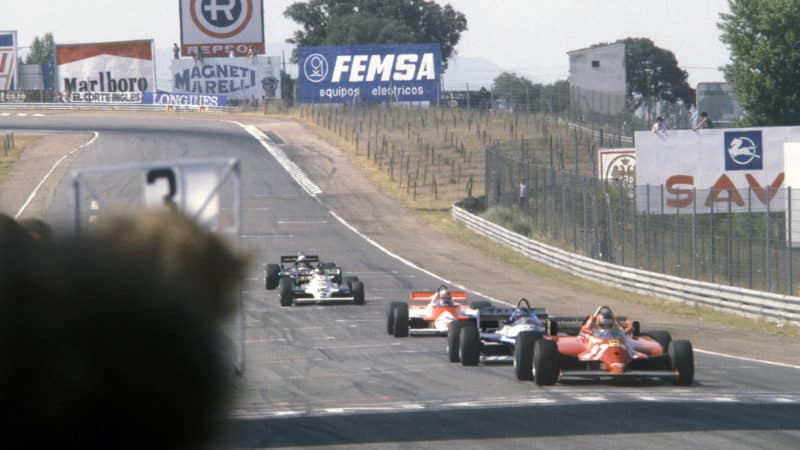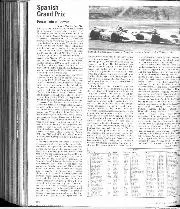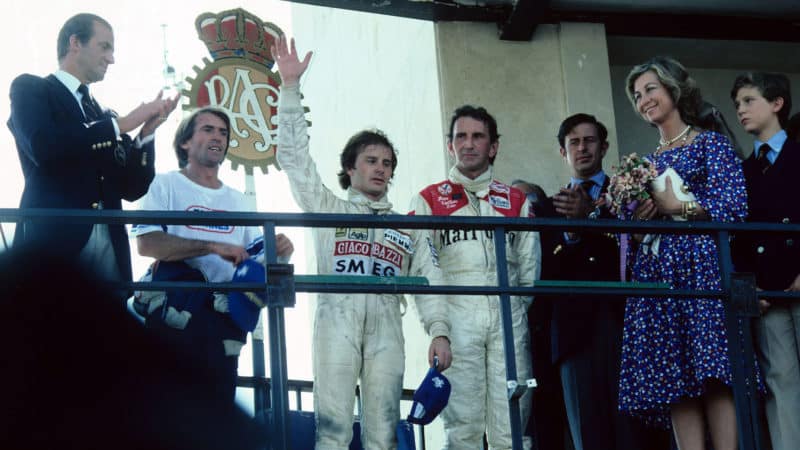“I always enjoyed Jarama, I’d driven there in Formula 2 and in Formula 1 – a smallish track with some elevation changes,” he says.
“All around the racetrack, you’re looking at second and third-gear corners. The quickest turn was one coming onto the start-finish straight. The corner under the bridge and up the hill was probably the only other major challenge.”
“The trouble was it wasn’t particularly easy to overtake, because the straights between the corners weren’t especially long.”
This was a key factor which Villeneuve would use to his advantage later on. First, though, the Ferrari driver would have to negotiate the start – which he aced.
Rocketing off the grid, Villeneuve used the 126C’s superior grunt to burn off Bruno Giacomelli in his Alfa Romeo and Watson before diving outside to outdrag Renault’s Alain Prost and the Alfa of Mario Andretti.
One corner in and he’d already taken four places, but he wasn’t done yet. Rounding the final turn on lap one, Villeneuve at first appeared far too distant to attempt a move on Williams’ Carlos Reutemann.
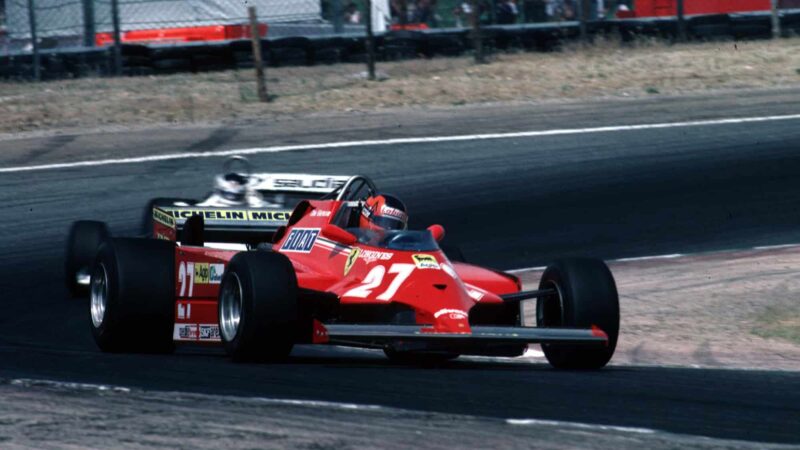
Villeneuve got ahead of Reutemann on lap one
DPPI
His extra power paid off though, Reutemann’s DFV no match for the Ferrari engine. Villeneuve drew close on the straight and managed to get alongside the Argentinian as they headed into the first corner, putting his Ferrari where few others would.
Villeneuve dared to brake later, swooping round the outside to take second. Whilst the later laps of this race might not have been the French-Canadian’s style, early on it was vintage Villeneuve.
And so the cars held position until lap 13, until the idiosyncrasies of Jarama did for the leading Williams of Alan Jones.
“To some degree, I would say Jarama would be what you would call a traditional one-line racetrack,” says Watson.
